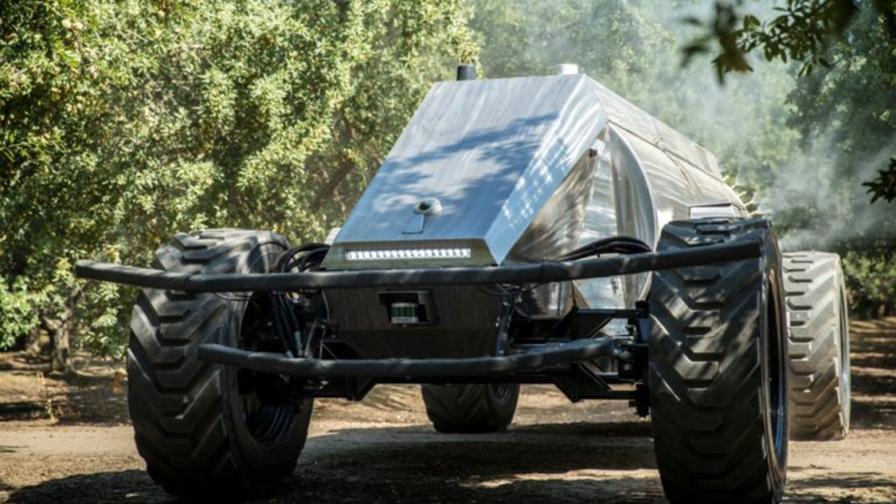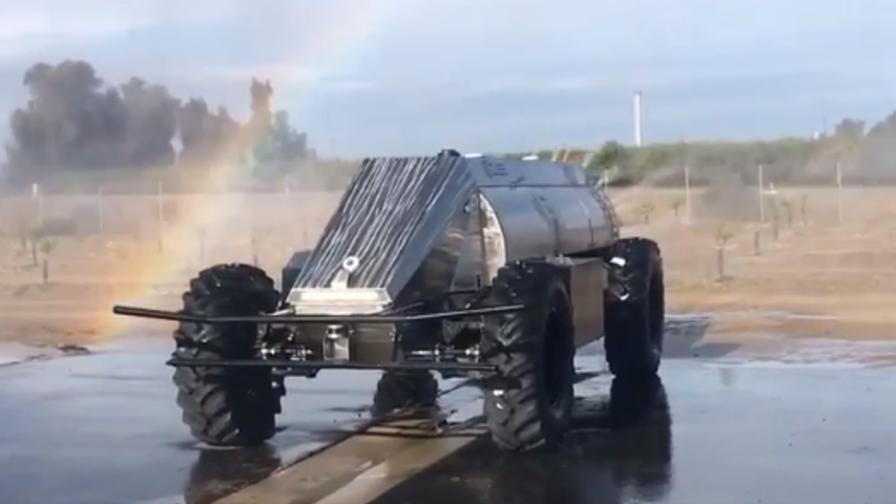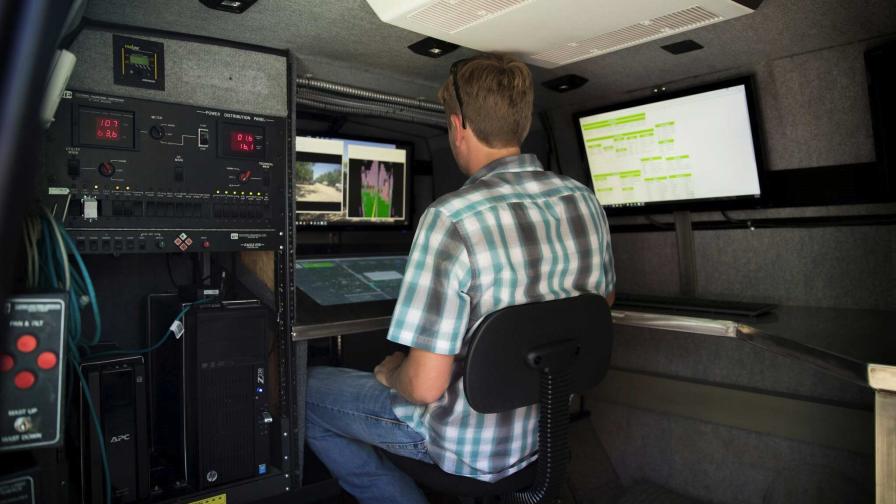Specialty Crops: Autonomous Orchard Sprayer Drives Itself Off of the Assembly Line

The Global Unmanned Spray System (GUSS) is quite a sight in an orchard. Its angular exterior protects the trees and fruit from being damaged during spraying operations. Even at 6 feet, 4 inches tall, GUSS is actually shorter than a typical tractor and fan orchard sprayer being used, making it more nimble under a low-hanging tree canopy.
Automation is my nomination for the “2019 Ag Word of the Year.” I’m pretty sure that’s not a thing but with all of the end-of-year lists being published right now, it might as well be.
It seems like every ag tech manufacturer and news site is talking about automation. And at a discreet facility southeast of Fresno, CA, it’s more than just talk. There a machine roars to life and drives out the door. This isn’t some prototype of the future of agricultural equipment. This is GUSS, the Global Unmanned Spray System. GUSS is in production and is being delivered to customers from California to Florida. At the time of writing this article, there are six GUSS units being delivered to excited customers looking to eliminate operator and production costs. That is quite the feat considering the journey it has taken to get GUSS going.

Another GUSS comes off the assembly line, getting its sprayer tested before shipping out. Current production time is a week but they are quickly stepping up production to keep up with the incredible demand.
GUSS is a custom platform from the ground up, it is also the dream of Dave Crinklaw. Dave’s father Bob Crinklaw started a custom spraying business in 1982 targeting the area’s orchard, citrus, and vineyard crops. Crinklaw Farm Services grew from spraying 40 acres a day to the ability to spray an average of 5,000 acres during the peak season today and is now known as CFS LP.
With key managers and employees in place, and with Bob’s retirement, Dave’s mind began to wonder how to spray more with less operators in hazardous conditions while saving on labor. With this idea in mind, they developed the industry’s first three and four-row vineyard sprayers, mechanical vineyard pruners, and the Tree-See orchard sprayer. The Tree-See was their first step towards automation, this system turns on and off nozzles only when a tree is present which saves hundreds of gallons of chemical over an orchard.
MORE BY ROSS KOTEWA
Autonomous Tractors Could Work in Wetter Conditions than Traditional Tractors
Crop Protection Application by Drone: A Q&A with Kray Technologies CEO Dmytro Surdu
In 2007, Dave started to play with the idea of a driverless sprayer. Rising labor costs and the need to achieve higher efficiency of equipment lead to this idea. But it was not until 2015 when precision technology caught up with Dave’s dream and his team was able to produce the first GUSS prototype. The issue being that established tree canopies almost completely block GPS signals, so it could not rely on a singular guidance system. Laser ranging sensors (LIDAR), a front-mounted camera, and touch-sensitive bumpers are all compiled with GPS data into their proprietary software to guide GUSS between rows of high value trees. Tree-See technology is also in use to ensure that the spray will shut off the 32 individual nozzles once the sprayer finds a gap in the row or completely off once it finishes a row and needs to turn around.
The self-propelled machine is powered with a Cummins 6.7L making 173 hp available to the hydraulic system to power the four-wheel drive, spray pump, spray fan, and all the electronics. The large 90-gallon fuel tank ensures 14 hours of run time, while a 600-gallon spray tank is refilled via three fill inlets making down time minimal. All of this is in a package of tough angular stainless steel which gives the impression that Elon Musk copied their design for his Cybertruck. At 24 feet long, one would think it isn’t nimble but four-wheel steering gives GUSS a turn radius of 17 feet making sure it can fit into some of the tightest of orchards.

The operator’s station for GUSS is in a nearby control vehicle. From here the operator has all the information at his fingertips, working in comfort with significantly lower stress and work hazards than traditional orchard sprayers.
GUSS’s operations are handled from a nearby control vehicle. An operator can command up to eight GUSS units from one control station. From the control vehicle all of the data and video for each unit is displayed and the operator can view live video from each machine while tank level, location, spray rate, speed, and heading are displayed and logged for record keeping. Field boundaries are made, and if any machine crosses the field boundary, the machines will shut down. In addition, any of the machines the operator is monitoring can be remotely shut down if the machines need to be stopped for rain. Because they stop automatically, once they need to be refilled it makes it easy to keep them moving and with a 14-hour run time on a full tank one GUSS can really cover ground.
While labor concerns are everywhere in agriculture, these concerns are top of mind for specialty crop growers. Most orchards have to wait anywhere from four to eight years before they can harvest the first crop. While growers wait for the first crop they still need to focus on agronomic needs of the trees and vines. This has growers looking for technology as a way to lower costs. GUSS answers this challenge with the blend of precision ag, military guidance, and cellular data. Their achievements have not gone unnoticed. The Consumer Electronics Show will award them a 2020 Innovation Award. They are one of only two companies that will receive awards at the 2020 show in January, the other one rhymes with Don Steer. I am excited to see GUSS run and most importantly see GUSS spray.










